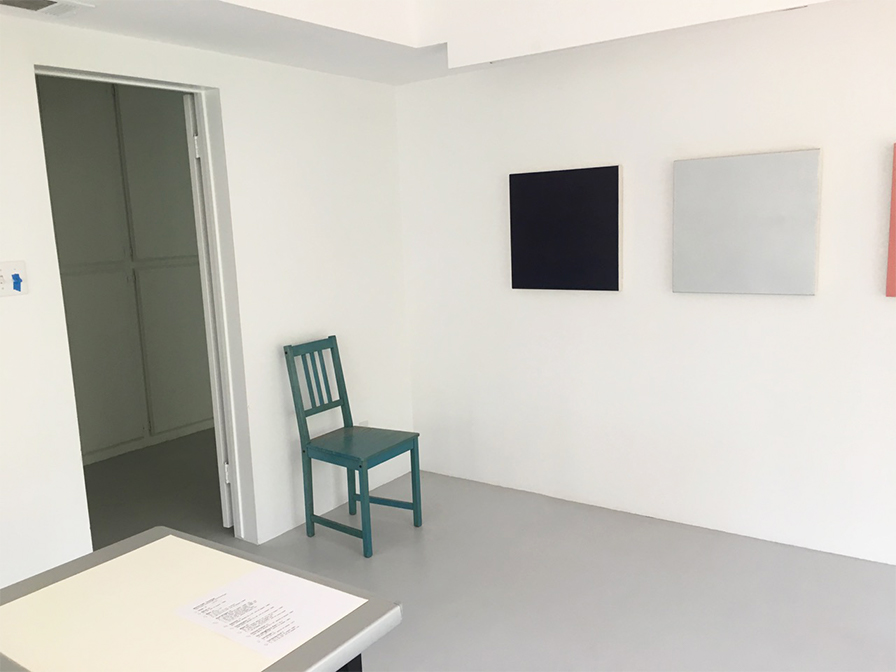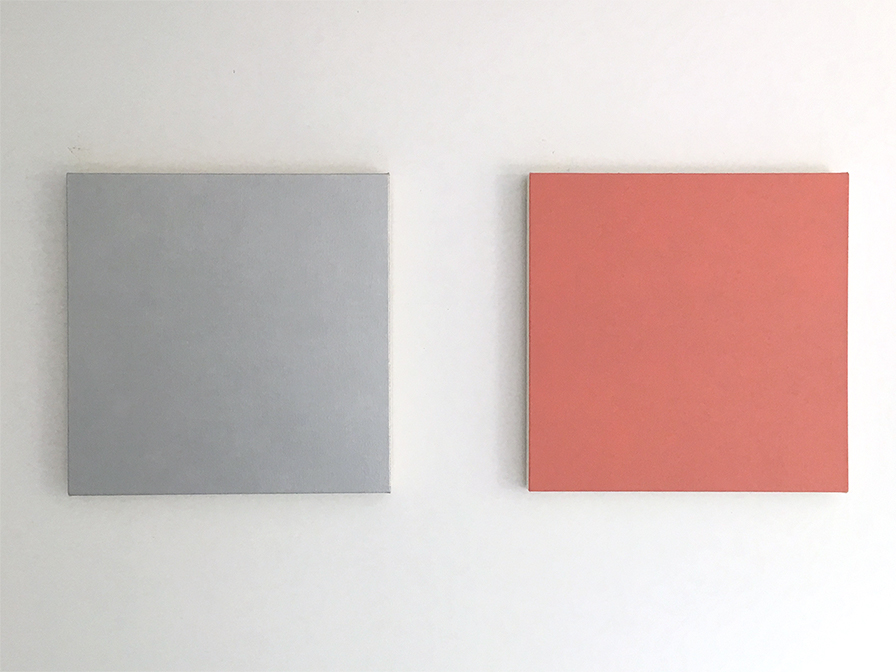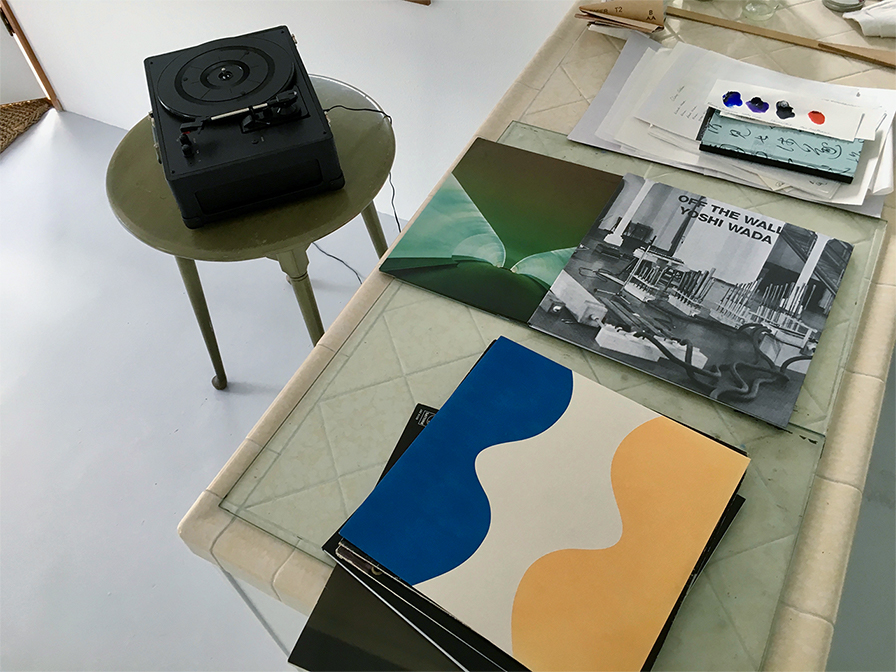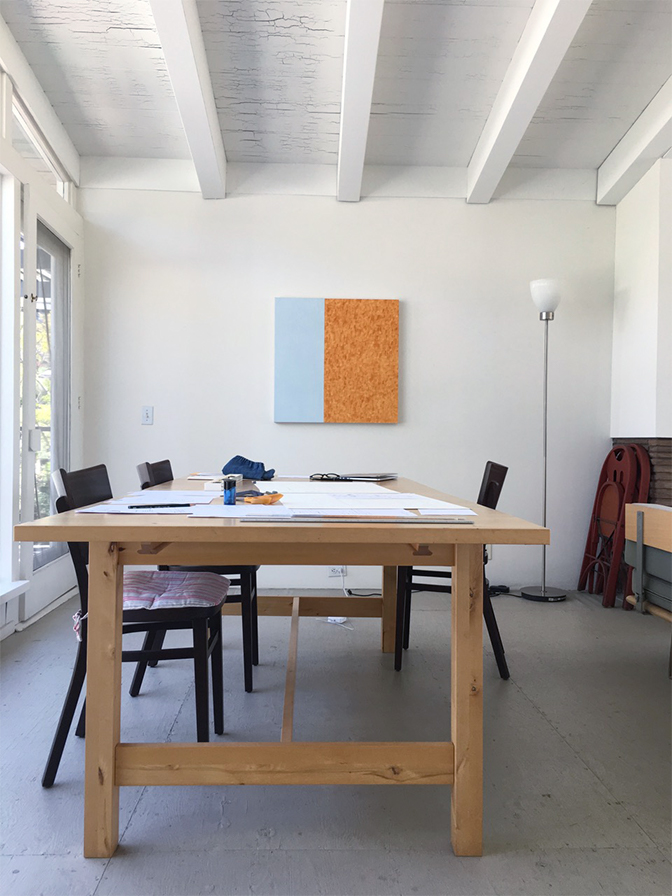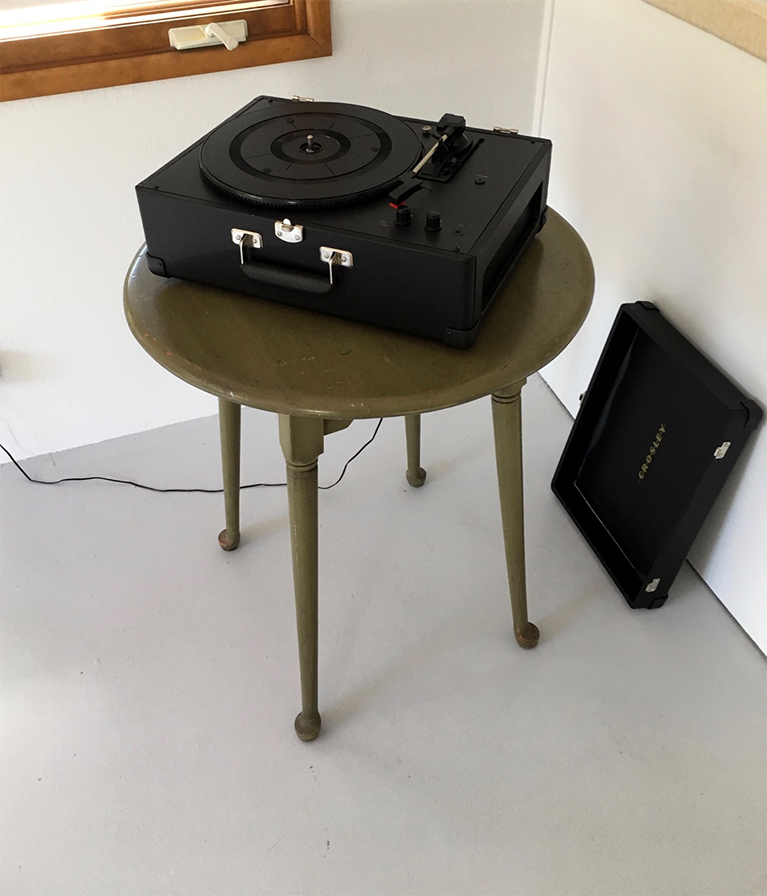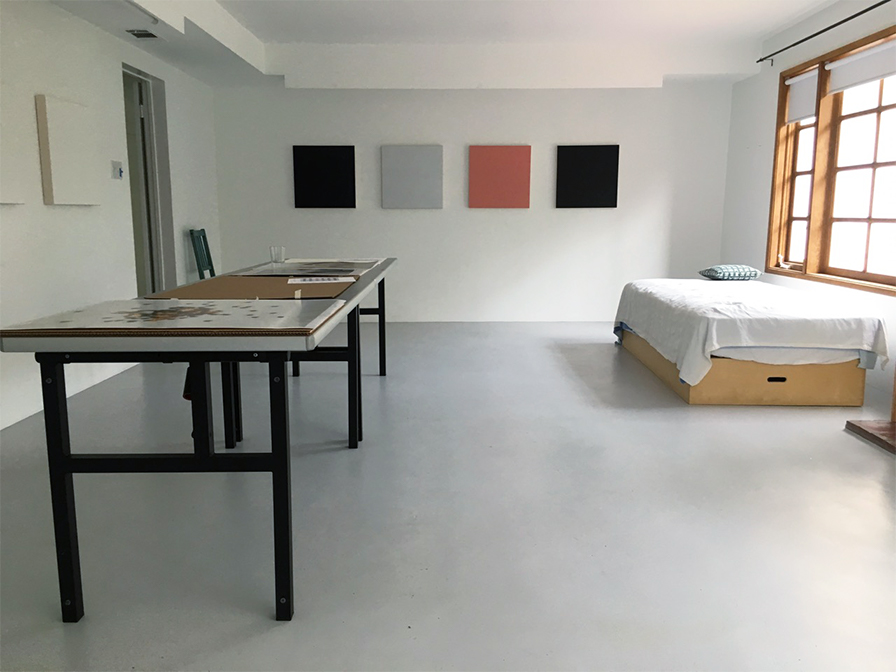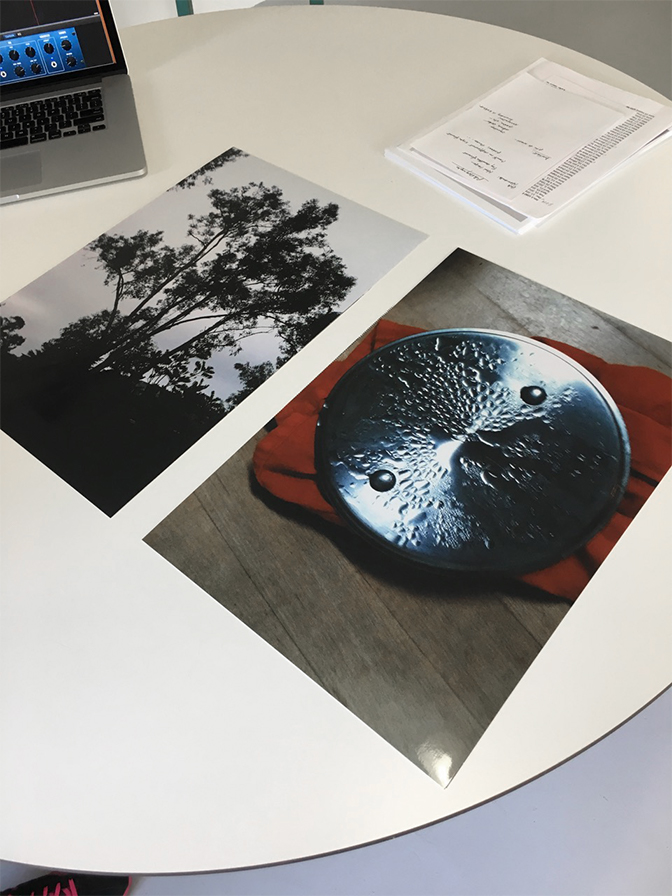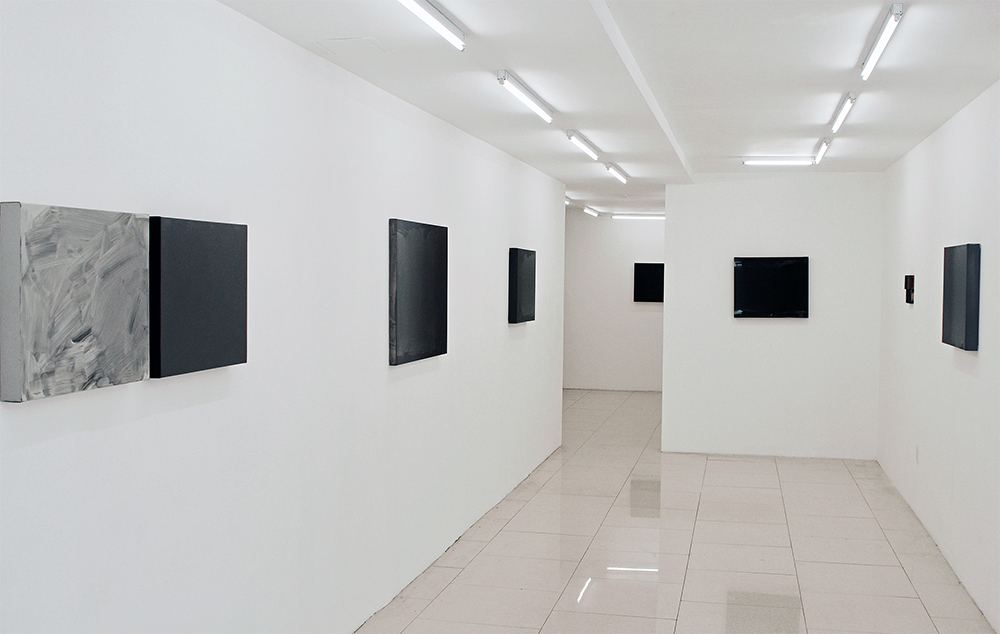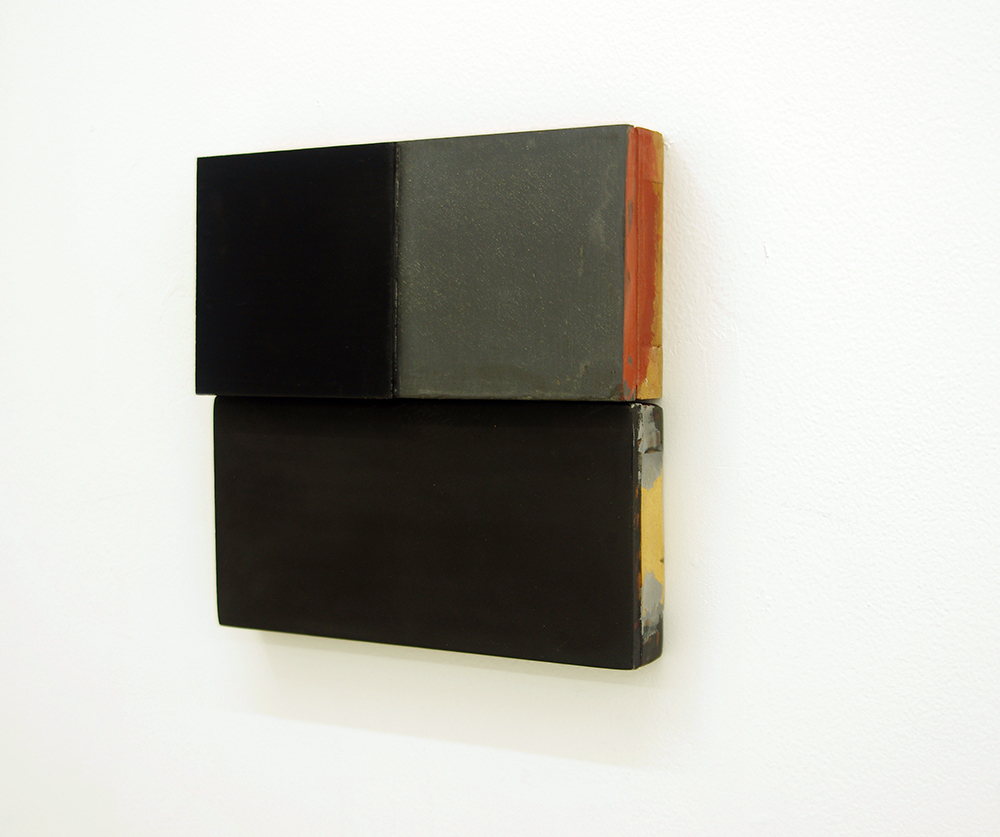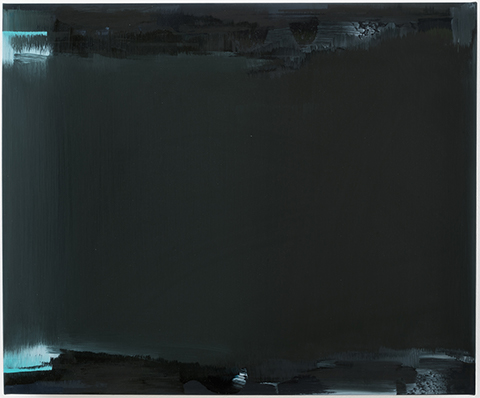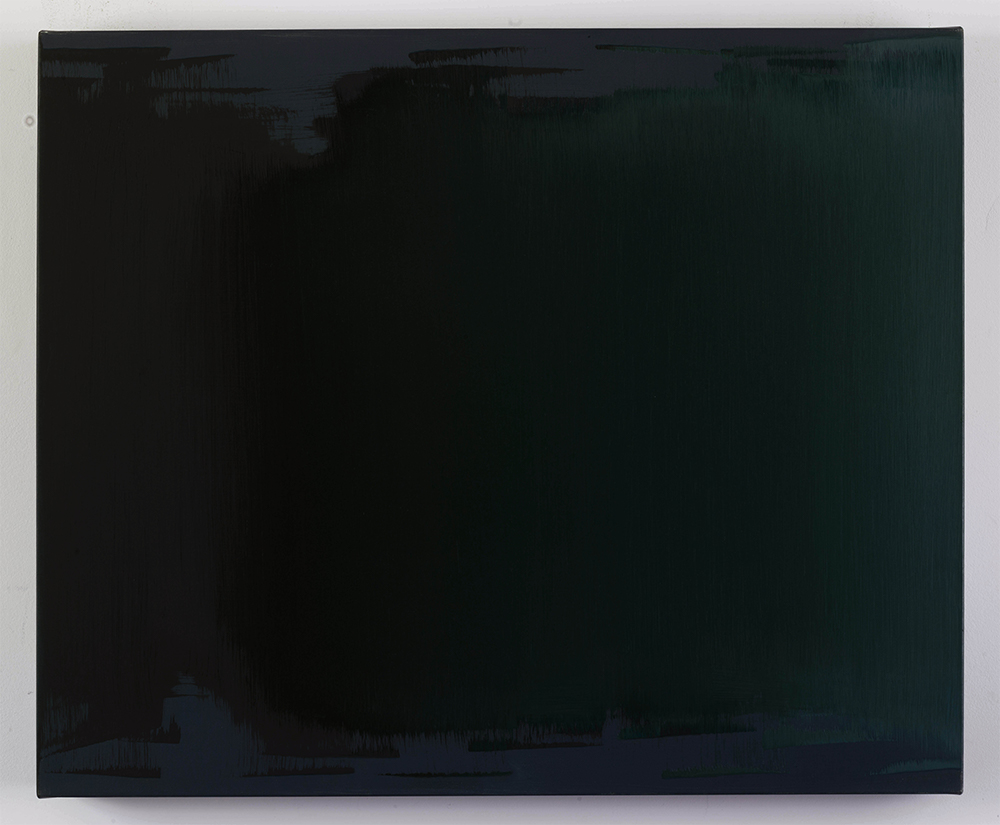"In graffiti culture, a name, composed of stylized letters, represents writer’s alter ego. I remove letter shapes, extract only the flowing line and repeat it to maximize its dynamism. By doing so, I create an abstract motif. Instead of having a new name for my self, I gave a name to the motif: Quick Turn Structure.
What was a name that represented one's alter ego turned into plain visual objects. Lines slash back, spin and interlock. Facet-like surfaces generate three-dimensional depth. Those visual objects create a complex shape through minimal yet spontaneous expansion. Its tightly knit structure multiplies by intrinsic order and grows without hardening up.
The way QTS generates is not based on a mathematical algorithm nor a random improvisation. Instead, it is based on a methodology that was somatically gained through the experience of numerous practices performed on various media with different scales and materials.
QTS has its own life. Its physical manifestations are channelled into unique art pieces from one specific moment in time. The pieces are called FFIGURATI, a term referring to the word “graffiti” and the Italian expression “figùrati” (literally translated as “figure it out yourself”), numbered in the order of their creation."
Studio Visits
Studio Visit: Marcia Hafif
I spent a wonderful afternoon at the studio of Marcia Hafif in Laguna Beach, CA this March and had a chance to interview here about her 70 plus years of art making. We also spoke about her ideas for upcoming shows, ones that will also feature her extensive drawing practice, as well as new color digital photograph diptychs made with her iPhone camera. I will be posting a video interview with her on my website soon. Please stay tuned for her upcoming interview I wrote in PARNASS art magazine.
Here is a piece of writing as an introduction to her work "The Inventory" on her website:
ABOUT THE INVENTORY
THE SERIES
The Inventory is a listing by series of works in the approximate order they appeared. One series followed another at approximately two years intervals, in idiosyncratic order, building my project of examining the methods and materials of Western Painting in the form of works of art.
In 1972, in order to start at the beginning, I covered a vertical sheet of drawing paper with vertical pencil marks starting from the top left and ending at the bottom right. Each drawing developed in a slightly different way leading to unexpected patterns within that same procedure. I turned to paint, acrylic at first presenting a palette of fourteen colors on fourteen canvases then oil in The Extended Gray Scale, 106 canvases graduated from white to black.
About this time I was lent Max Doerner's book, The Materials of the Artist and Their Use in Painting that led me to experiment. I bought every color in powdered pigment that I could find using a glass muller to grind them one by one into linseed oil making my own paint. Each color was painted on prepared canvas on a ready-made stretcher each element referring to Painting. Wall painting came next, then grayed colors, the color of "the most beautiful black," and the color of skin in European painting each displaying some technique such as egg tempera, encaustic, watercolor, glaze or scumble.
ABOUT HANGING
I do not make paintings so much as I make installations. Each series has its inherent way of hanging though it is difficult to make any firm rules. In each case - with one work or many - I look for the way the painting(s) will join with the wall to unite the space. Every location is different, high ceiling or low, long or short walls, with different windows, light sources, doors, obstructions. I use a center height through all the works, one that will be not too high for viewing with approximately the same distance between ceiling and floor.
In addition each series has its own needs: An Extended Gray Scale is hung in sequence with narrow spacing though the rows can be installed above and below or a section can be displayed separately. The large Mass Tone Paintings represent History Painting or Portraiture. The Table of Pigments, or elements of paint color is displayed in rows and blocks but each work can also be seen alone. The Neutral Mix Paintings are intended to be hung above and below each other in Salon Style.
TITLES
Every piece in The Inventory is related to every other. Titles include the series, the name, the size and often the date and place of making as in The Inventory: Mass Tone Paintings: Viridian, o/c, 72 x 68", New York, 1974.
Studio Visit: Nancy Haynes
I had the pleasure of interviewing Nancy Haynes for an upcoming article in PARNASS art magazine. It was such a privilege to discuss several bodies of work and I am very excited about her current exhibition "this painting oil on linen" at Regina Rex Gallery, New York.
Haynes continues her unwavering investigation into the painted illusion of light that was exemplified in our previous show, anomalies and non sequiturs (2015) with a range of approaches--from her earlier works using gilding clay and glow in the dark paint to her cast glass sculpture made from uranium glass. Both as a phenomenological exercise and a visualization of the layers of consciousness, Haynes's paintings demonstrate a commitment to a visual progression rooted in stillness and timelessness.
Nancy Haynes was born in Connecticut in 1947 and moved to New York in 1967. She lives and works in New York and Colorado. Haynes will be included in an upcoming group exhibition at Kunsthalle Krems, and a solo show at Galerie Hubert Winter, Vienna. An extensive exhibition history beginning in 1978 at the historically significant One Hundred Dollar Gallery and includes selected solo exhibitions at Regina Rex, 3A Gallery, NY; George Lawson, LA and SF; Lawing Gallery, Houston, TX; Galerie Hubert Winter, Vienna; Galerie von Bartha, Basel, Switzerland; John Good Gallery, NY; and John Gibson Gallery, NY among numerous others. Haynes?s work is included in the public collections of the Metropolitan Museum of Art, the Museum of Modern Art, the Whitney Museum of American Art, the Brooklyn Museum, the National Gallery of Art, and many others. Honors and awards include grants from the Pollock- Krasner Foundation, the National Endowment for the Arts, and a New York Foundation for the Arts Fellowship.
Studio Visit: Jason Bailer Losh
I enjoyed my studio visit with sculptor, painter and successful podcaster (Seeing is Forgetting), Jason Bailer Losh. By using found objects, Losh constructs spindly and tactilely satisfying sculptures and paintings that register as both uniquely charming, and curiously familiar. Here are some notes from his recent Plow Louise exhibition:
The objects upon each pedestal are found in thrift and second-hand stores. The motley collection is bought by the artist’s father-in-law and boxed and sent to Losh. He uses these items and constructs them into particular compositions, sequences and arrangements.
The surface of each component is carved with a distinct history. Cracks, dents and paint abrasions that have accrued over decades distinguish their weathered surfaces. The wall sculptures are laced with ropes and etched with lines that record the artist’s hand.







